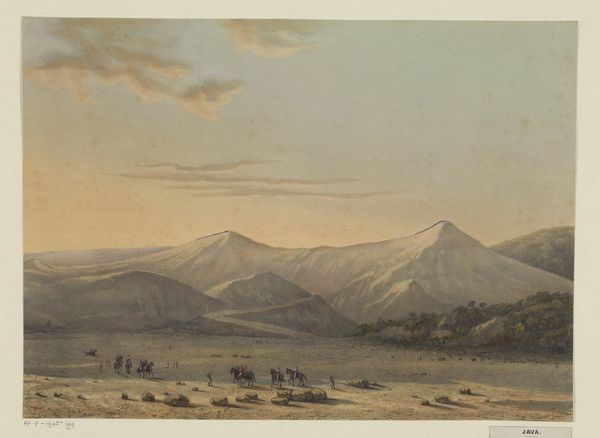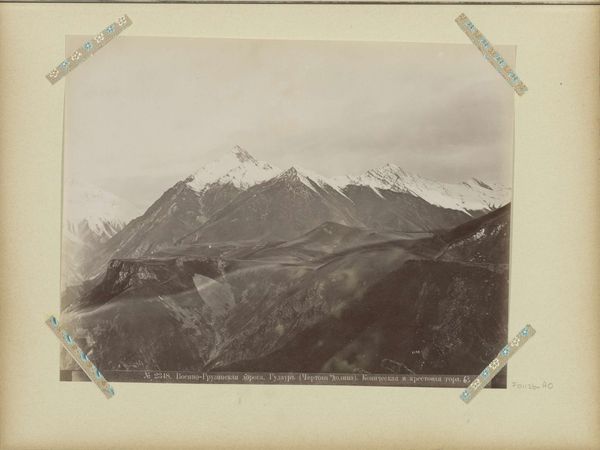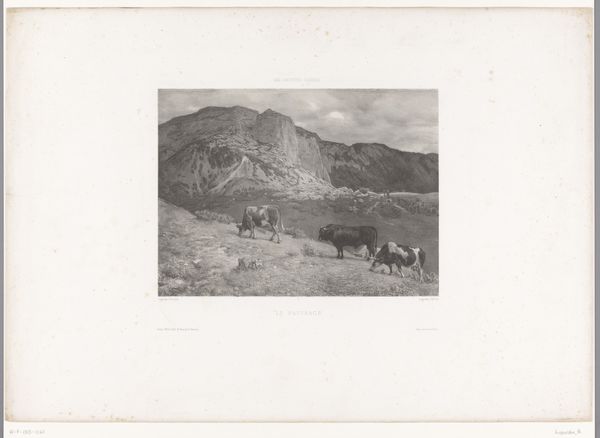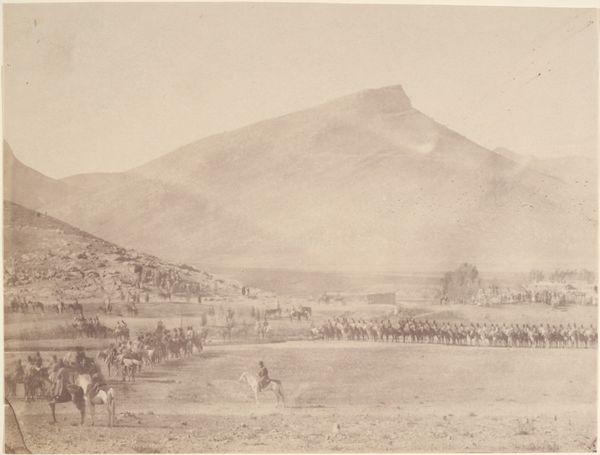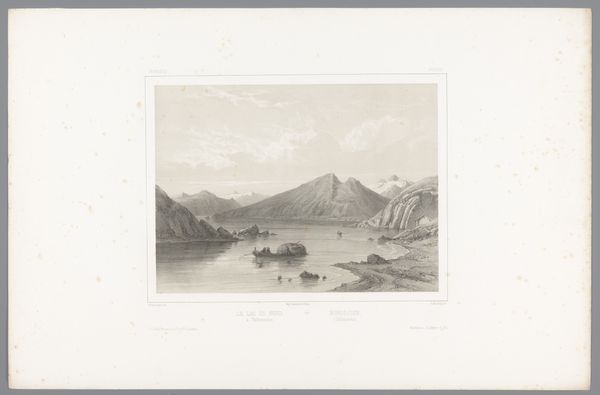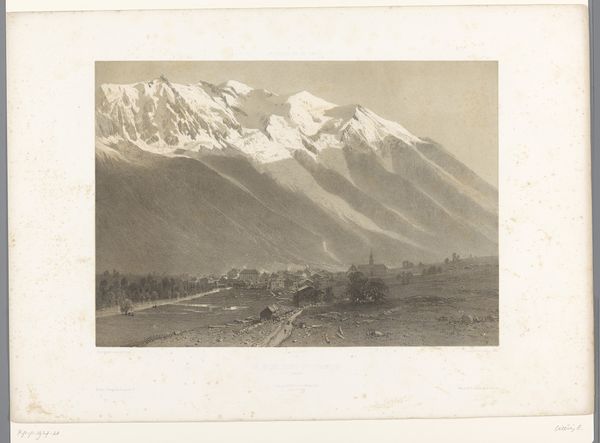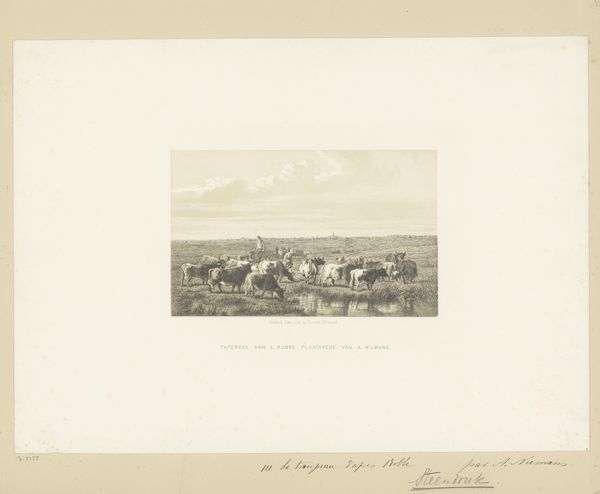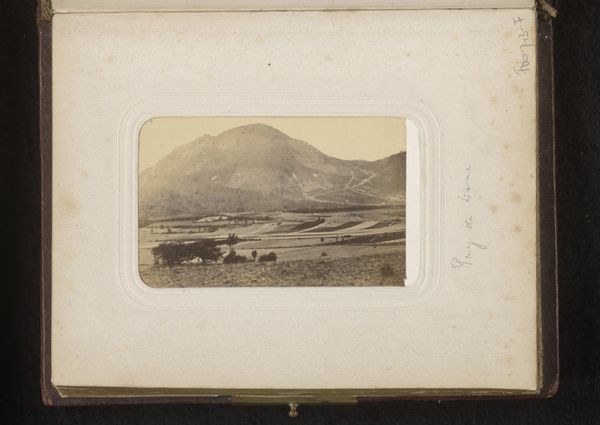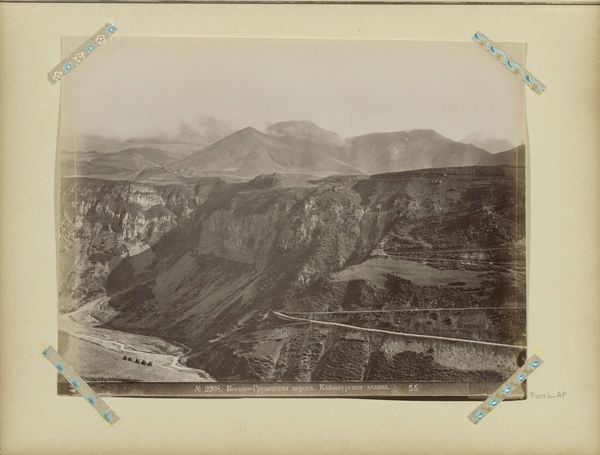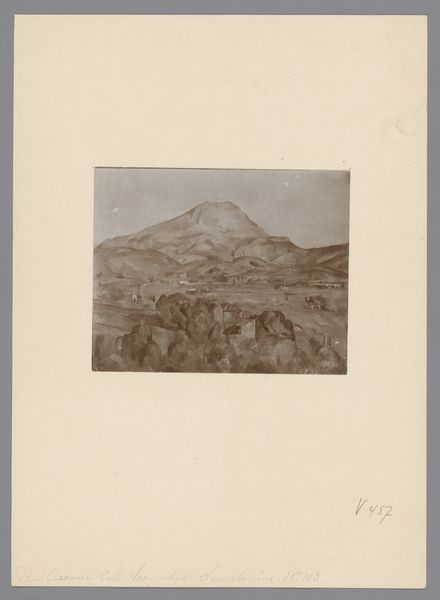
Fotoreproductie van een schilderij door I.N. Zankovsky, voorstellend de berg Ararat c. 1890 - 1900
0:00
0:00
photography, photomontage, albumen-print
#
landscape
#
photography
#
photomontage
#
mountain
#
orientalism
#
albumen-print
Dimensions: height 203 mm, width 259 mm
Copyright: Rijks Museum: Open Domain
Curator: This intriguing photographic print, "Fotoreproductie van een schilderij door I.N. Zankovsky, voorstellend de berg Ararat," was created sometime between 1890 and 1900, using the albumen print process, a very popular choice in those days. Editor: It has this…dreamlike quality, doesn't it? The soft, sepia tones lend it an antique feeling, like peering into a half-remembered memory. It almost obscures the labor involved. Curator: Exactly. The subject, Mount Ararat, looms large, laden with significance for Armenians, representing both cultural heritage and profound loss. And the photomontage process is itself a manipulation of reality to produce an idealized image. Think about the orientalist context – how the construction of “the East” played into Western imperial fantasies. Editor: I’m drawn to the material reality of the print. It’s a photochemical artifact: light, silver, paper…all physical components subjected to a specific labor to render an image. Notice the caravan of figures with camels at the foot of the mountain, carefully arranged and the material resources deployed to set up the photo itself. It reminds me that every image, regardless of the subject matter, has been produced using actual labor and that deserves our attention. Curator: And these depictions often reinforced unequal power dynamics between the colonizer and the colonized. The "exotic" landscape and figures served to distance viewers from the socio-political complexities of the region. Gender, race, and even the idea of nationhood were all actively being constructed in the frame. Editor: Right. The image feels suspended, somehow outside the regular work of the world. But understanding the means by which that illusion was created brings the social relations back into the frame. Curator: Looking at this through the lens of postcolonial theory helps us unravel the intricate relationship between visual representation, ideology, and political dominance. We question the intentions behind producing this kind of landscape. Editor: For me, looking closely at the means of production highlights the actual people who helped produce it – that can point us toward stories the final image occludes. Curator: Well said. Considering it, this albumen print makes us reconsider the image and labor it conceals. Editor: Absolutely, and with that, the layers begin to unravel, and our understanding becomes more complex.
Comments
No comments
Be the first to comment and join the conversation on the ultimate creative platform.

